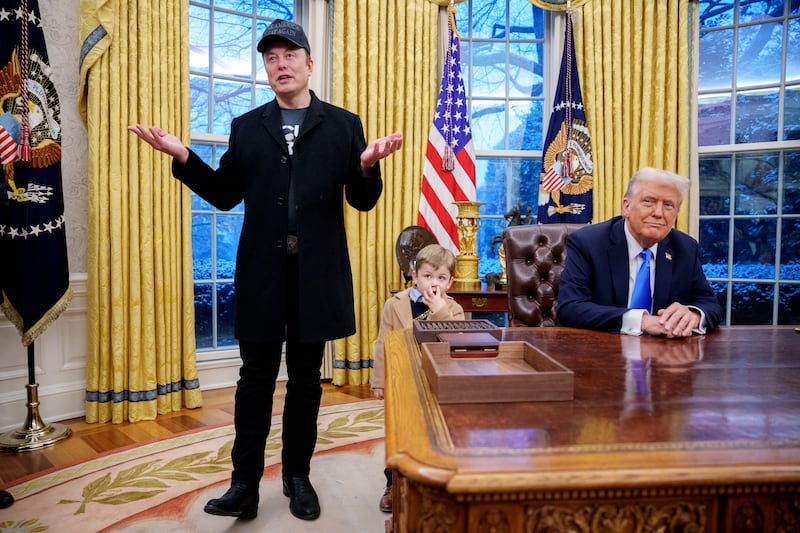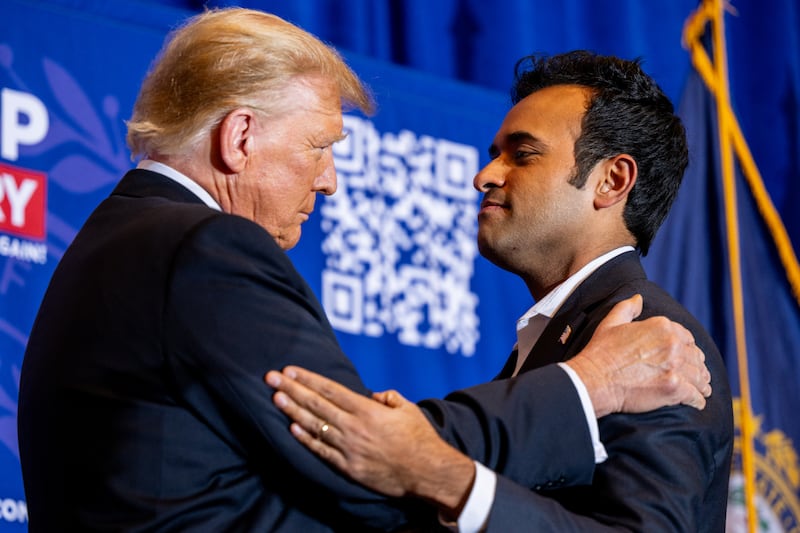Elon Musk began his top-secret Department of Government Efficiency takeover of the federal government while former President Joe Biden was still in office.
The world’s richest man was able to hit the ground running on President Donald Trump’s first day in office because his team had already begun infiltrating the U.S. Digital Service—an agency former President Barack Obama created in 2014 to help government departments fix tech problems, which Trump renamed DOGE—in December and had gathered key intel from across government agencies, according to a new report from The New York Times.
In just over a month, Musk’s nebulous cost-cutting task force, DOGE, has inserted itself into more than 20 agencies and tried to access at least seven databases with private personal and financial information about millions of Americans, the Times reported.

Operating without congressional oversight, the group has also attempted to purge the civil service, canceled hundreds of millions of dollars in government contracts, and unilaterally shuttered an entire government agency, triggering a wave of lawsuits.
The Times investigation revealed that after Trump’s victory, Musk began brainstorming a new government efficiency task force with Vivek Ramaswamy, who was supposed to co-lead the initiative but later backed out; billionaire investor Howard Lutnick, who is now Trump’s secretary of Commerce; and a health care entrepreneur named Brad Smith, who had worked with Trump’s son-in-law Jared Kushner during his first term.

Smith gave Musk a lesson in civics and the basics of the federal budget, explaining how appropriations work. But Musk quickly grew tired of Smith, who insisted they work with lawyers and follow their advice.
Musk, on the other hand, only wanted loyal lieutenants who would help him tear down the government. He and Ramaswamy welcomed the idea of lawsuits, assuming that the Supreme Court would side with them after Trump stacked it during his first term.
Trump had originally announced that DOGE would be an outside entity, but Musk soon decided he wanted it to be internal to get full access to federal data and payment systems. The key to tearing down Twitter had been access to its systems, the Times reported.
Smith helped lead Musk to the U.S. Digital Service. One of his executives, Amy Gleason, had worked there for three years under Trump and Biden.

Musk’s team came up with a secret plan to take over the digital service and move it from the Office of Management and Budget to a standalone entity in the executive office of the president. Musk would be named an adviser, not the DOGE administrator, creating a complicated structure that would let Musk work in secret.
In December, Gleason rejoined the U.S. Digital Service as an advisor. She suggested the agency directly hire three young engineers who would eventually join Musk’s team, though it wasn’t clear at the time she was doing so. One was rejected, and the two other applications stalled.
In the meantime, Musk’s allies fanned out across the government as part of the transition, demanding information about computer systems, contracts, and personnel. Trump transition aides went to the Treasury Department in December and asked to see source code for the secret federal payment system that processes $5 trillion per year, but they were turned away, according to the Times.
On his first day in office, Trump signed an executive order renaming the U.S. Digital Service to the U.S. DOGE Service, and Gleason’s recommendations were quickly hired. Gleason was eventually named acting administrator of DOGE.
The White House has claimed in legal filings that Musk is just an outside advisor to the White House and that Gleason is the one in charge of DOGE.
And yet, in a statement for the Times article, White House spokesperson Karoline Leavitt told the paper, “President Trump’s brilliant idea to create a Department of Government Efficiency remains overwhelmingly popular with the American people, and there is no one better on the planet to oversee this effort than Elon Musk.”
Musk did not respond to the paper’s requests for comment.






